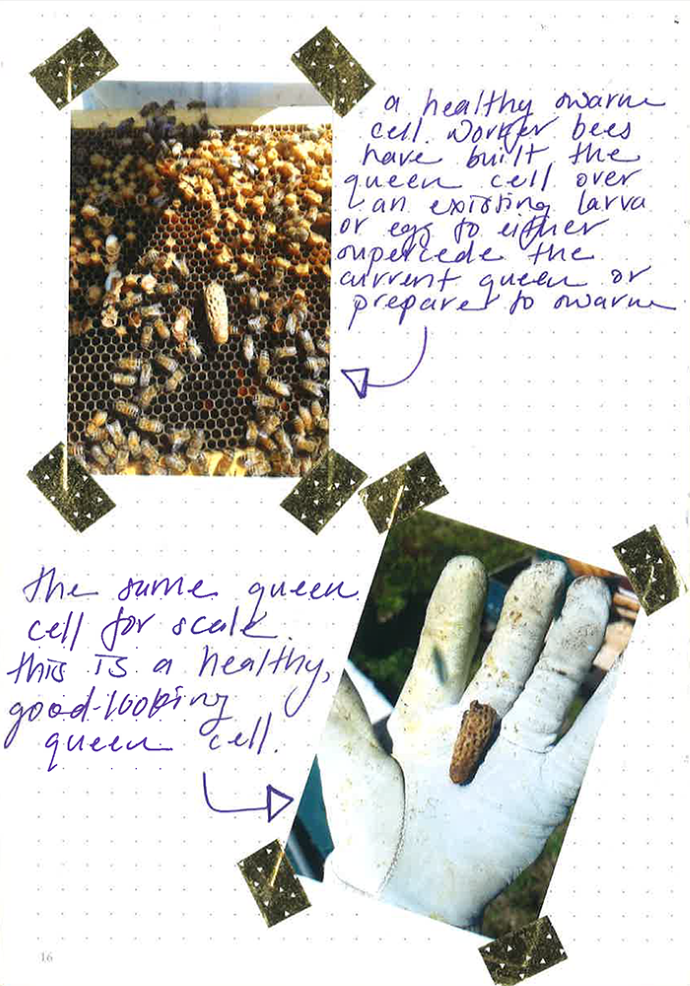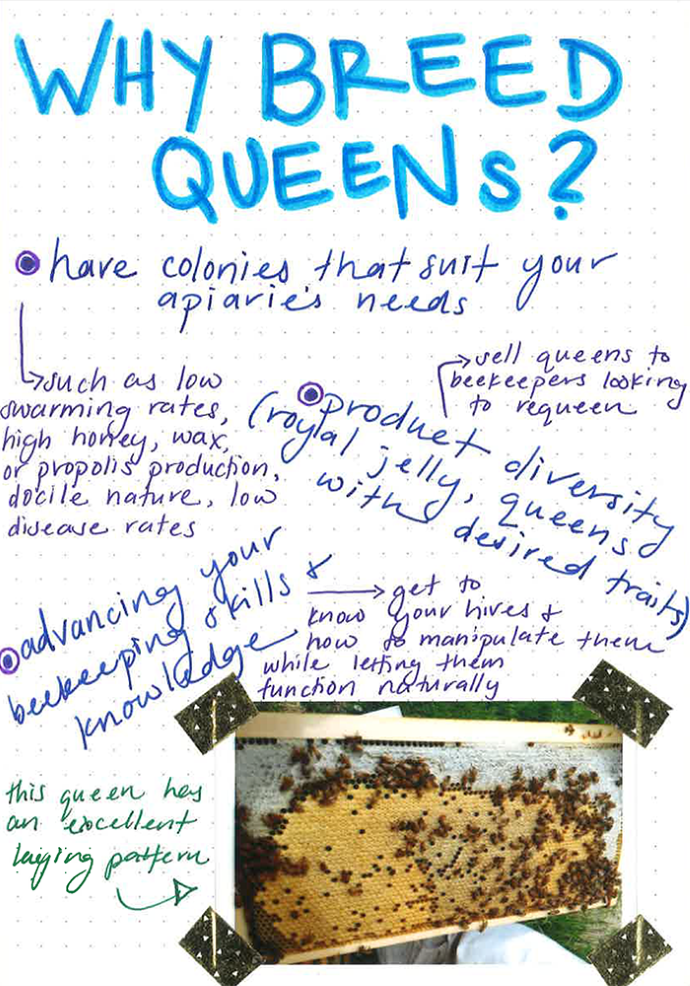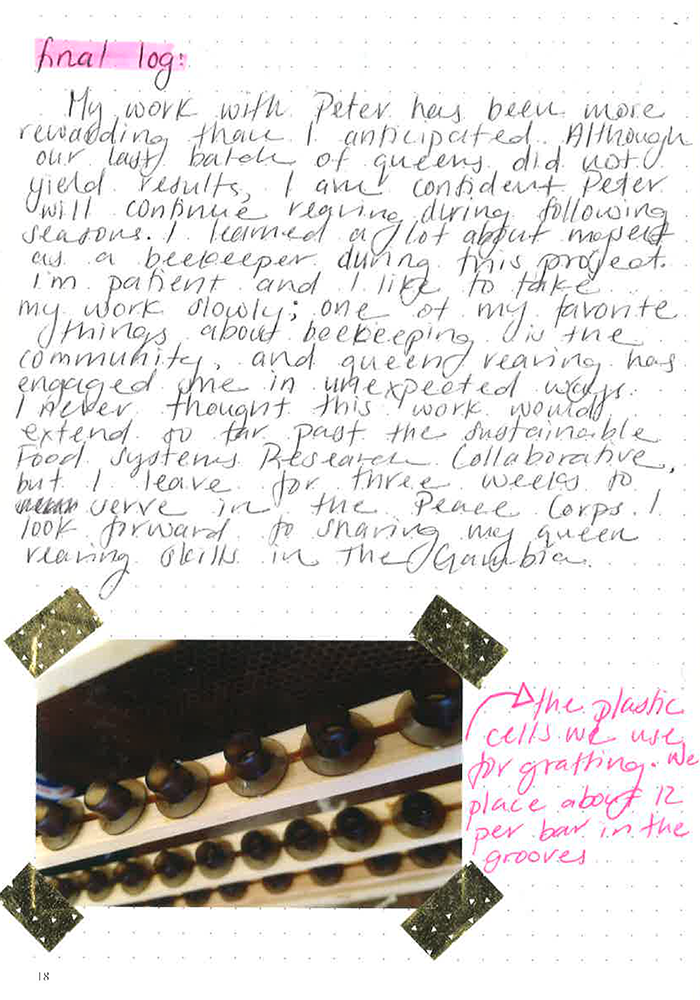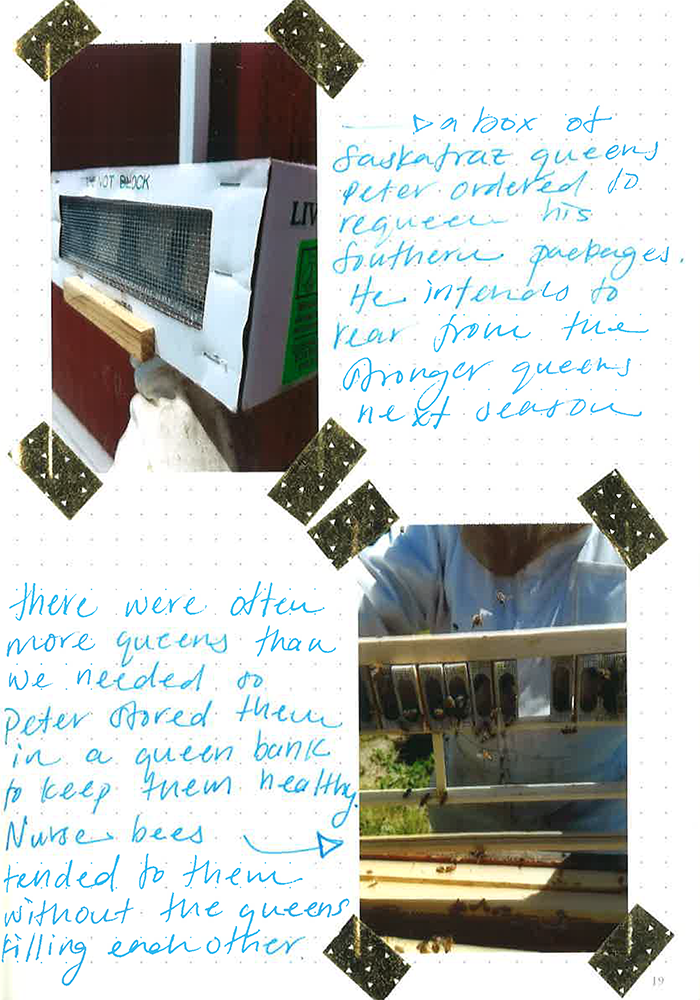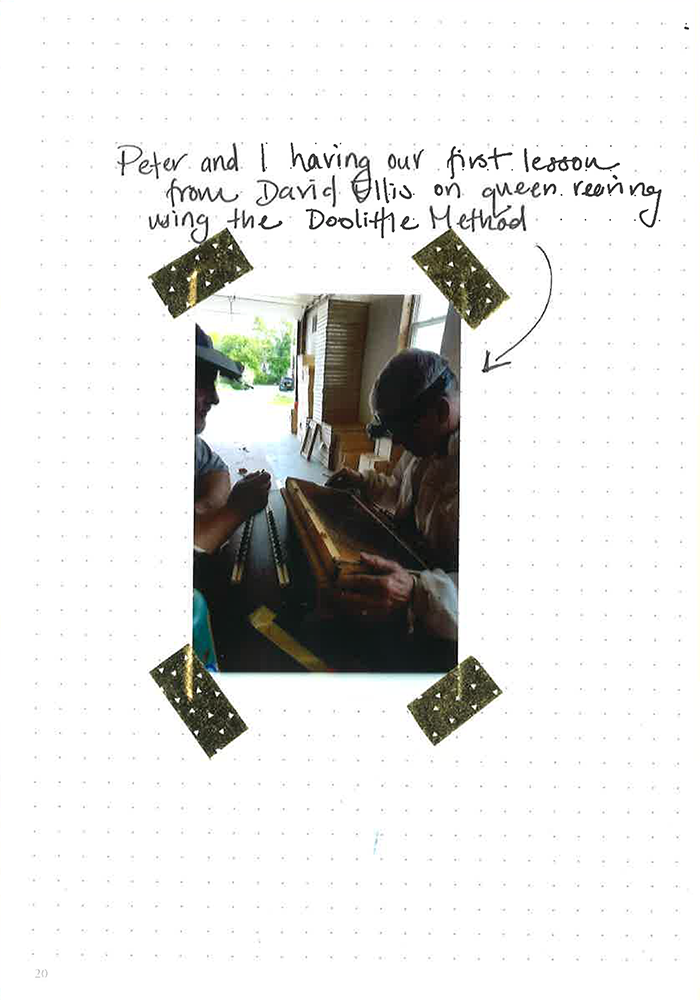Rearing Queen Honey Bees: A Bullet Journal
Marianna Mead1
1College of the Atlantic, Bar Harbor, Maine.
SUMMARY
I created this bullet journal as part of my work as a Sustainable Food Systems Research Collaborative (SFSRC) fellow with the Sweet Spot Project during the summer of 2018. The Sweet Spot Project is a USDA-funded project on maple producers and beekeepers that involves the University of Maine’s Honors College and College of the Atlantic.
I started the project with the aim of researching queen rearing among honey bees and was paired with my community stakeholder, Peter Cowin. Our goal was to start a queen rearing operation from nothing, with Peter looking to potentially profit from queen rearing deliverables. My research focused on learning and understanding how to rear queen honey bees, what tools are involved, what skills are needed, and how knowledge is shared. As an SFSRC fellow, one of my responsibilities was to find a way to share what I learned throughout my research so that other beekeepers could use the knowledge that Peter and I co-produced.
My SFSRC teammates and I came up with the idea to prepare a bullet journal about my experience with Peter and the queens. This bullet journal contains my time logs from working with Peter. I included a queen rearing timeline, instruction on how to make a starter hive, the dos and don’ts of queen rearing, the dangers of disease, the benefits of queen rearing, and a grafting day checklist. I also included additional information I learned during my field work and my literature review. I include photos of my work as visual aids.
It was so much fun to record my queen rearing journey and to be creative in my delivery of information. My goal was to use colors and annotated journaling to make the lessons I learned while working with Peter easy and fun to absorb. My journal is by no means a step by step instruction manual for rearing queen honey bees, but an auxiliary guide for beekeepers to use to compare experiences. It was shared on the University of Maine’s Digital Commons, which is search engine optimized and free to access.
I plan to use what I learned about beekeeping and sharing technical information during my time as a Sustainable Food Systems Research Collaborative Fellow in my next role as a Community Gardening and Agroforestry Facilitator with the Peace Corps in The Gambia.
Pages 16 – 20 of Rearing Queen Honey Bees
A healthy warm cell. Worker bees have built the queen cell over an existing larva or egg to either supersede the current queen or prepare to swarm.
The same queen cell for scale. This is a healthy, good-looking queen cell.
Why Breed Queens?
- Have colonies that suit your apiaries needs
- Such as low swarming rates, high honey, wax, or propolis production, docile nature, low disease rates
- Product diversity (royal jelly, queens with desired traits)
- Sell queens to beekeepers looking to requeen
- Advancing your beekeeping skills and knowledge
- Get to know your hives and how to manipulate them while letting them function naturally
This queen has an excellent laying pattern
Final Log:
My work with Peter has been more rewarding than I anticipated. Although our last batch of queens did not yield results, I am confident Peter will continue rearing during following seasons. I learned a lot about myself as a beekeeper during this project, I’m patient and I like to take my work slowly; one of my favorite things about beekeeping is the community, and queen rearing has engaged me in unexpected ways. I never thought this work would extend so far past the Sustainable Food Systems Research Collaborative, but I leave for three weeks to serve in the Peace Corps. I look forward to sharing my queen rearing skills in The Gambia.
The plastic cells we use for grafting. We place about 12 per bar in the grooves.
A box of Sakatraz queens Peter ordered to requeen his southern paebages. He intends to rear from the stronger queens next season.
There were often more queens than we needed so Peter stored them in a queen bank to keep them healthy. Nurse bees tended to them without the queens killing each other.
Peter and I having our first lesson from David Ellis on queen rearing using the Doolittle Method.


